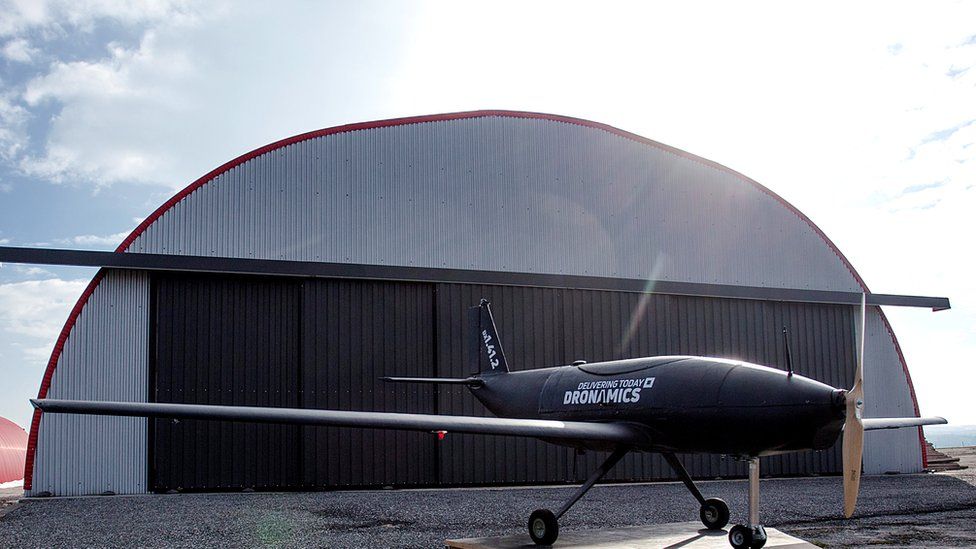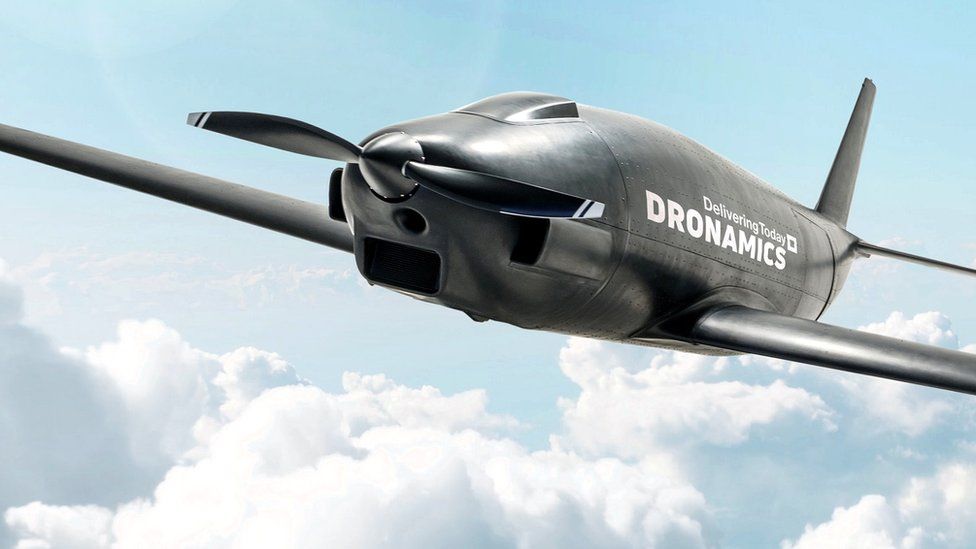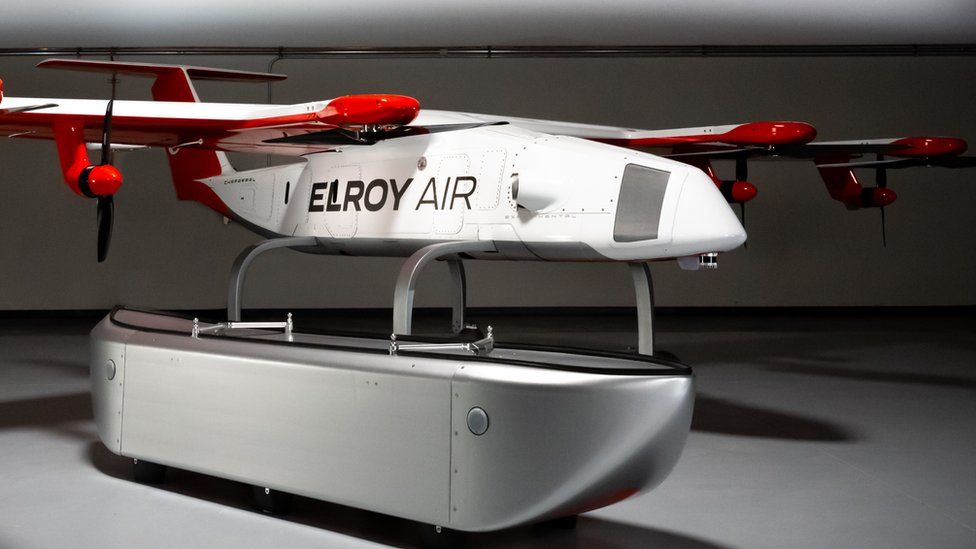The cargo hauling aircraft with no pilots on board

Svilen Rangelov sports an impressive beard. It’s eight years’ worth of growth he says.
The beard dates back to when he and his younger brother, an aerospace engineer by training, formed Dronamics as Europe’s answer to the emerging market for cargo drones.
He agreed with his brother Konstantin that they would shave their beards only after the first flight of the drone they’ve been building in their native Bulgaria.
At the time he established Dronamics big tech giants like Amazon were experimenting with drone deliveries to domestic addresses. But Mr Rangelov never believed in the concept of personal goods delivered by the drone.
The practical difficulties of flying a drone right up to someone’s front door were obvious to Mr Rangelov. “We couldn’t buy into the concept of small drones. We took a different approach.”
This take on drone delivery will bear fruit when the prototype cargo aircraft takes to the air.

Looking very much like a conventional light aircraft but without a pilot’s cabin, the drone combines “cell phone economics” in terms of cheap electronics, with the ability to land on short runways, says Mr Rangelov.
It will be known as the Black Swan.
“Here in Bulgaria air cargo means one large aircraft offloading goods onto a truck which then goes to a sorting centre where the delivery is broken down for the next stage of its journey to individual sites.”
He thinks taking a smaller load to a short airstrip closer to the final recipient will cut costs and take trucks off the road.
“There are 3,000 airstrips across Europe, that’s a lot of locations.”
Black Swan embodies a combination of lightweight composite materials (his brother’s speciality) and a standard piston engine that sips petrol while the drone cruises on long and fuel efficient wings.
This whole package will fly at 20,000ft altitude,below the mass of passenger air traffic. Dronamics sees this height band as unused airspace and is also testing out a new, synthetic aviation fuel which it claims will allow carbon-neutral flights.
The 350kg (770lb) cargo load of the Black Swan equals that of a small courier van. “We’re connecting city to city, not door to door.”
Dronamics plans to operate Black Swans like an airline, “Europe’s first drone cargo airline.” It will charge by weight or charter, cutting out the cost and time taken by vehicles that criss-cross Europe to deliver essential goods and parts.

German logistics giant Hellmann is poised to begin using these drones. Jan Kleine-Lasthues is in charge of this initiative and he has spent a long career in airfreight.
Mr Kleine-Lasthues doesn’t see conventional air freight facing competition from these new designs, but thinks the drones will allow Hellmann to fly goods that previously travelled by road.
Connecting Greek islands by cargo drone is one of Hellmann’s immediate ambitions, says Mr Kleine-Lasthues.
“The drones will be more frequent than ferries and we can use them to break down deliveries into several packages, so we can increase the frequency of deliveries. They represent a big change, they offer speed and flexibility.”
Dronamics claims a 2,500km (1,500 miles) range for its aircraft, putting the whole of Western Europe within range of any EU-based cargo hub.
While smaller versions of the drone are already flying in Bulgaria, a full-scale prototype should be airborne in early 2023.

Dronamics says the European aerospace regulator has been kept apprised of its planned operations and given it a limited licence to operate. Hellmann is talking about beginning to fly them during 2023.
Mr Kleine-Lasthues shares the opinion that earlier drone delivery models were a dead end. “I never believed in the idea of parcel drones. That’s why we’re working with Dronamics, it’s not an Amazon delivery type idea.”


Cargo drones have attracted the attention of Bristow, a US group that operates helicopters around the globe. Bristow has signalled its intent to buy up to 100 cargo drones from a Californian company, Elroy Air.
While the current of crop of passenger-carrying Electric Vertical Take-Off (Evtol) designs features all-electric power, the Elroy Air cargo drones will run on a hybrid electric engine, a small turbine that generates electrical power and runs off aviation fuel.
The hybrid design means the drone can refuel at existing facilities rather than relying on docking stations for electricity. And it burns less than a third of the fuel a helicopter uses.
“Pure electric power means you’re constrained by where you put the charging base” says David Stepanek, a former US Marine Corps helicopter technician who is now a Bristow executive studying cargo drone operations.

Bristow is looking at using the Elroy drones to back up its operations in locations such as West Africa, where the offshore oil industry needs to shift equipment and Bristow wants to reduce the costs of using helicopters and fixed-wing aircraft.
Elroy Air has been working on a large multi-engined, vertical take-off drone that can heave a 500lbs (226kg) load up to 480km (300 miles).
Elroy Air’s Kofi Asante researched autonomous trucks at Uber’s freight arm. He points out that the idea of a cargo pod attached and then de-coupled from the chassis of a an autonomous truck also works for a cargo drone.


He describes relations with US regulator the Federal Aviation Authority (FAA) as “very positive” with a test flight for a full-sized drone planned during 2023..
At over 8m (26ft) in width the drone, named Chapparal, is large by uncrewed civil drone standards. But that size is the point says Mr Asante.
“It can carry a hundred times the payload of small UAV (unmanned aerial vehicle), it’s comparable to a small plane in terms of load but operates at a fraction of the cost of a helicopter.”
You may not be ordering a flying drone delivery to your home address anytime soon. But it looks as if the death of one drone dream has opened the way for another more practical concept to thrive.
And this should usher in clean-shaven leadership at Dronamics.
